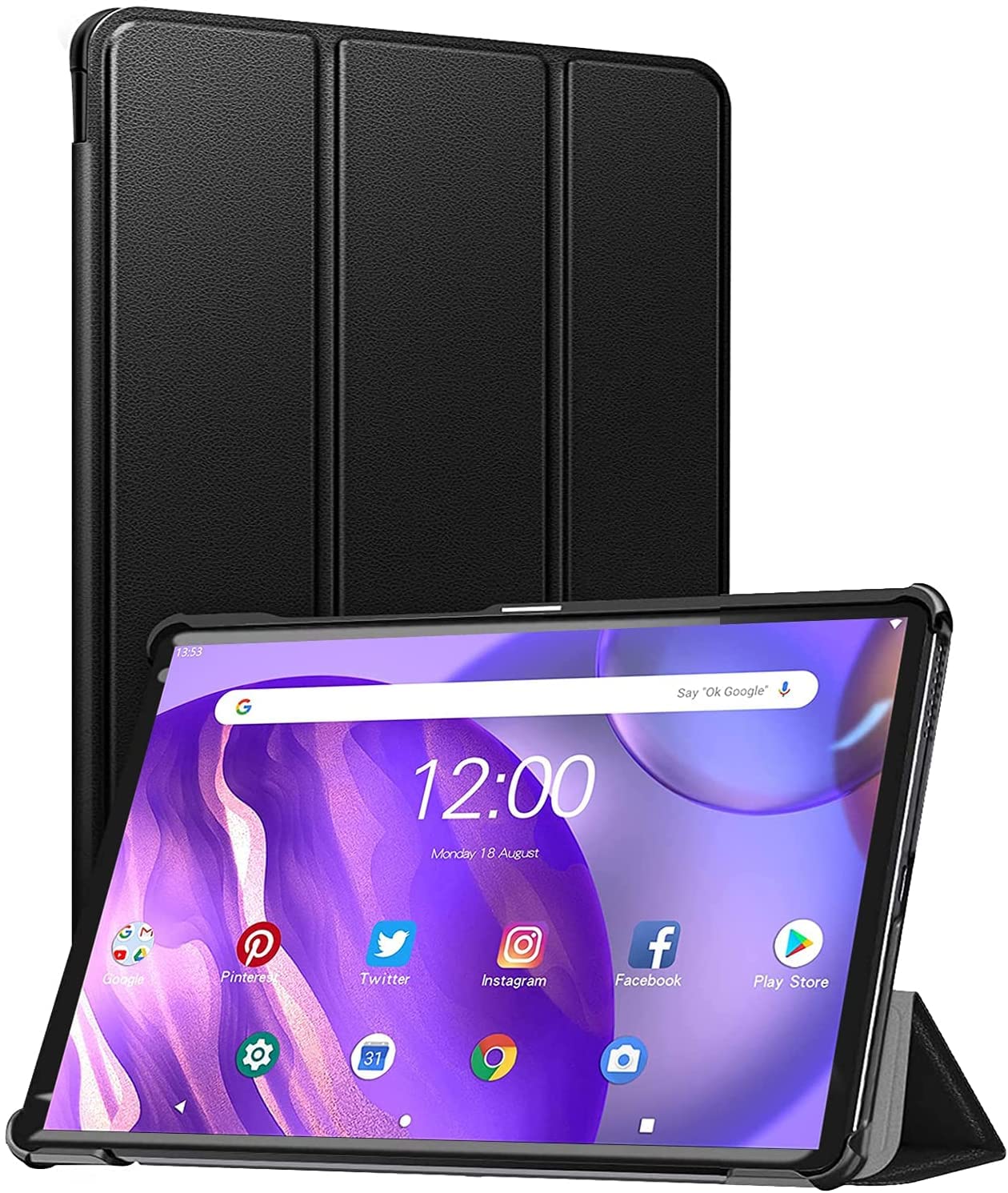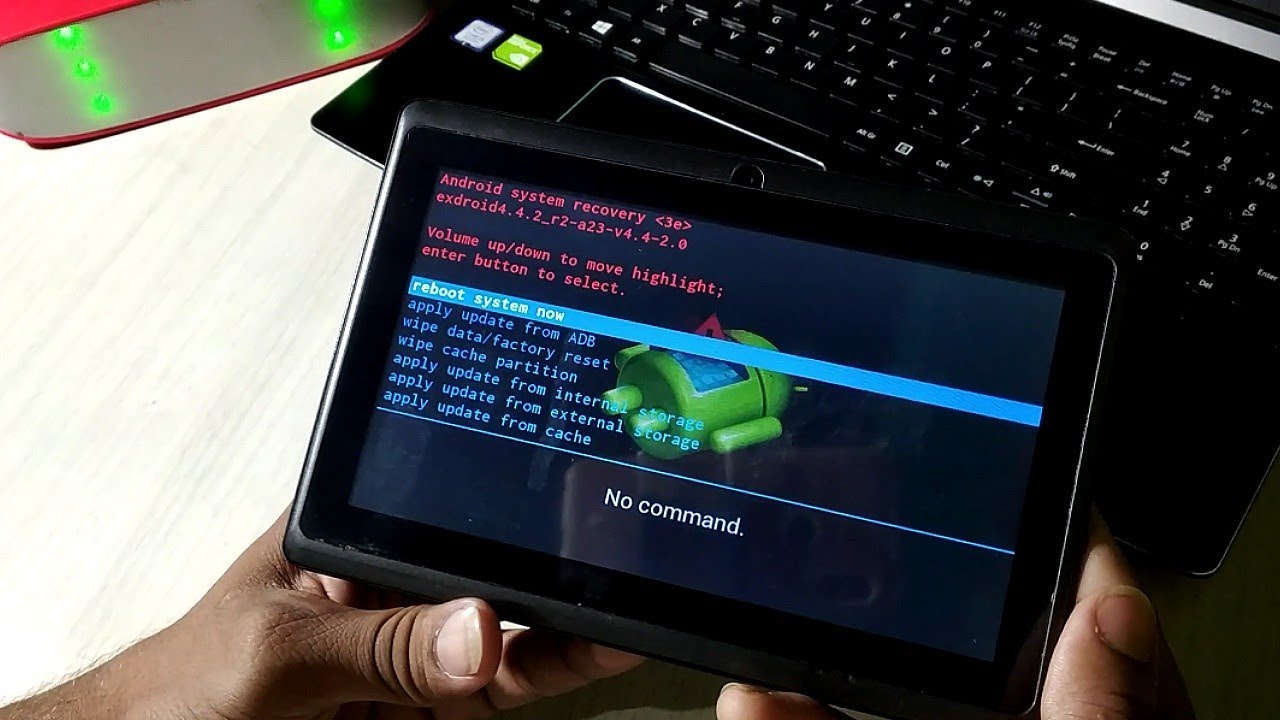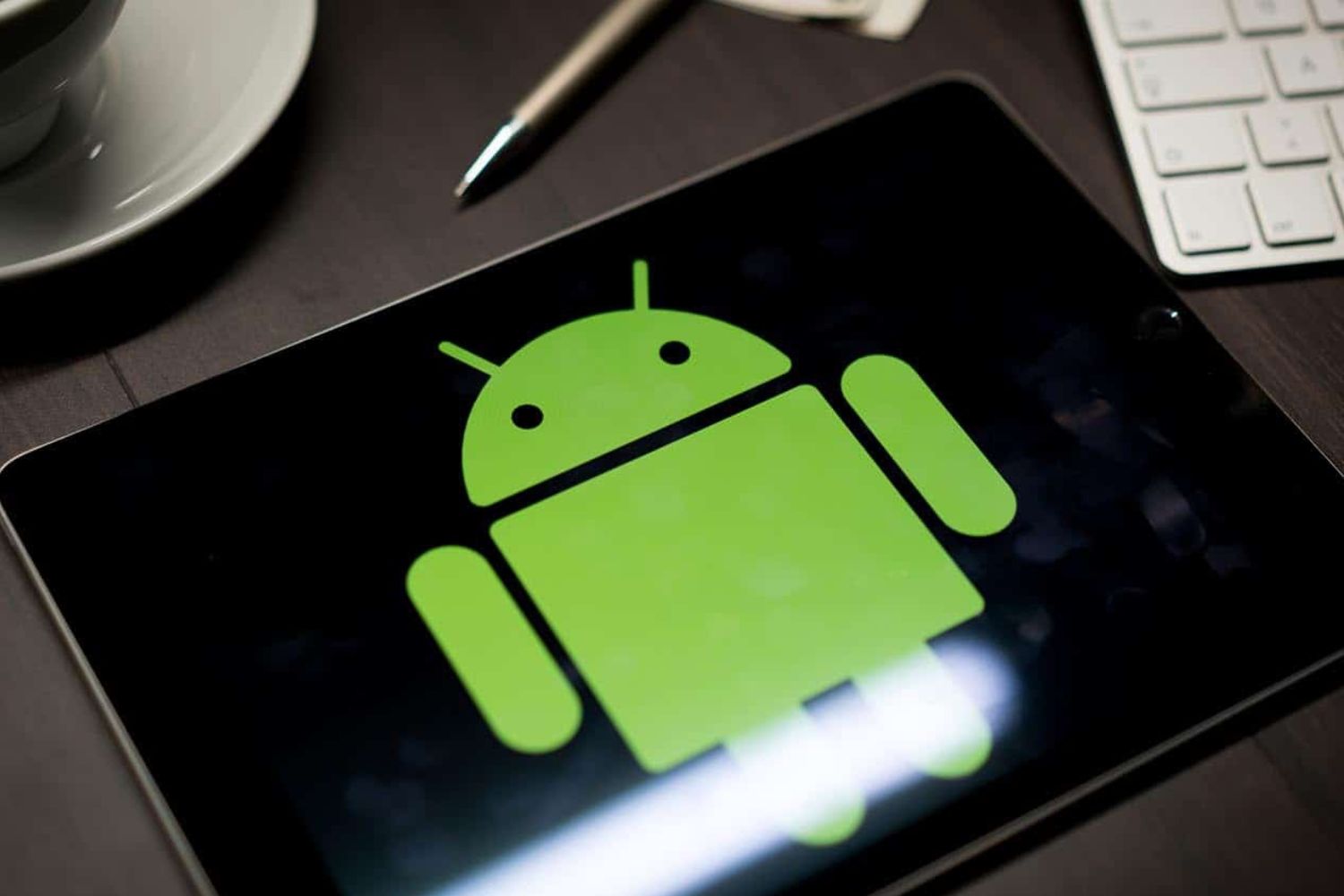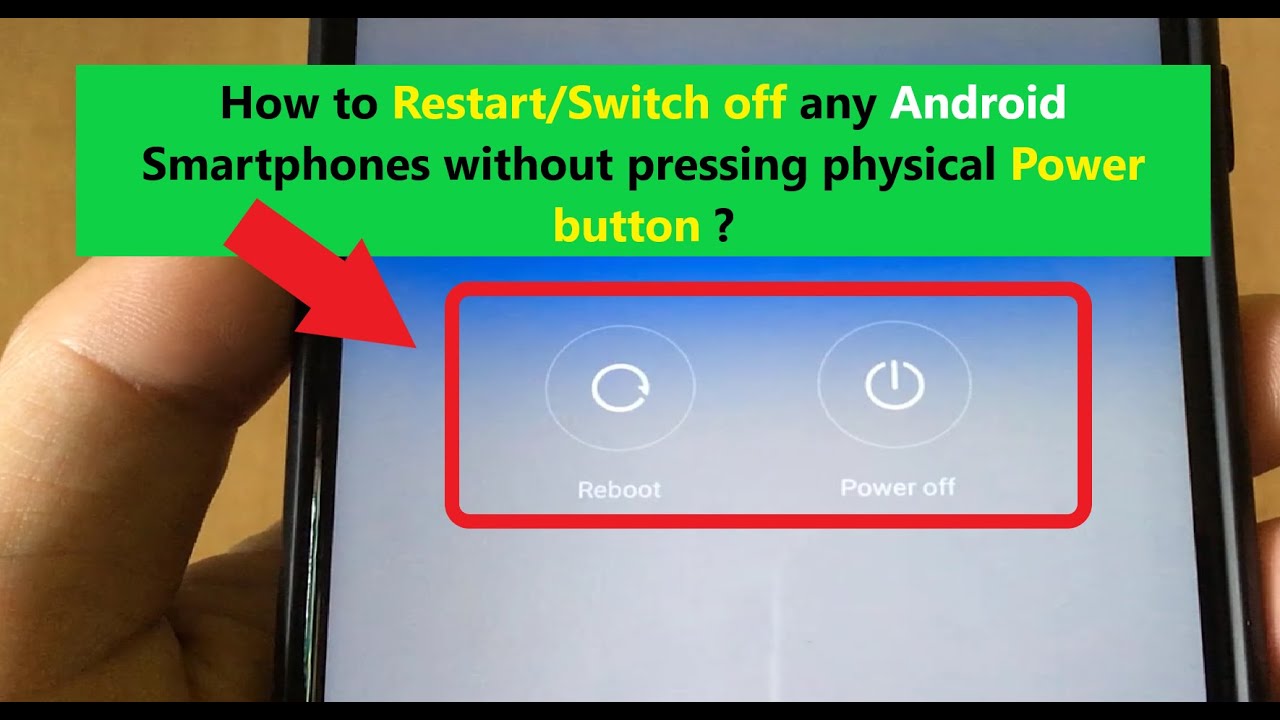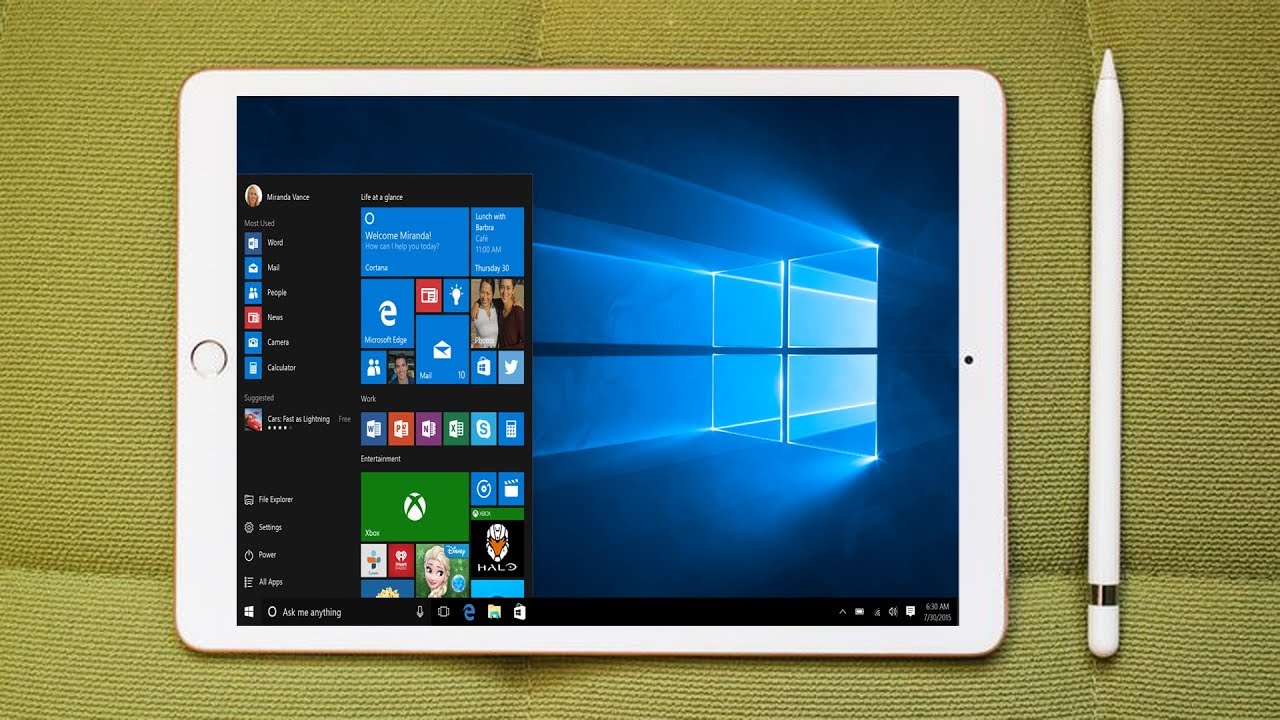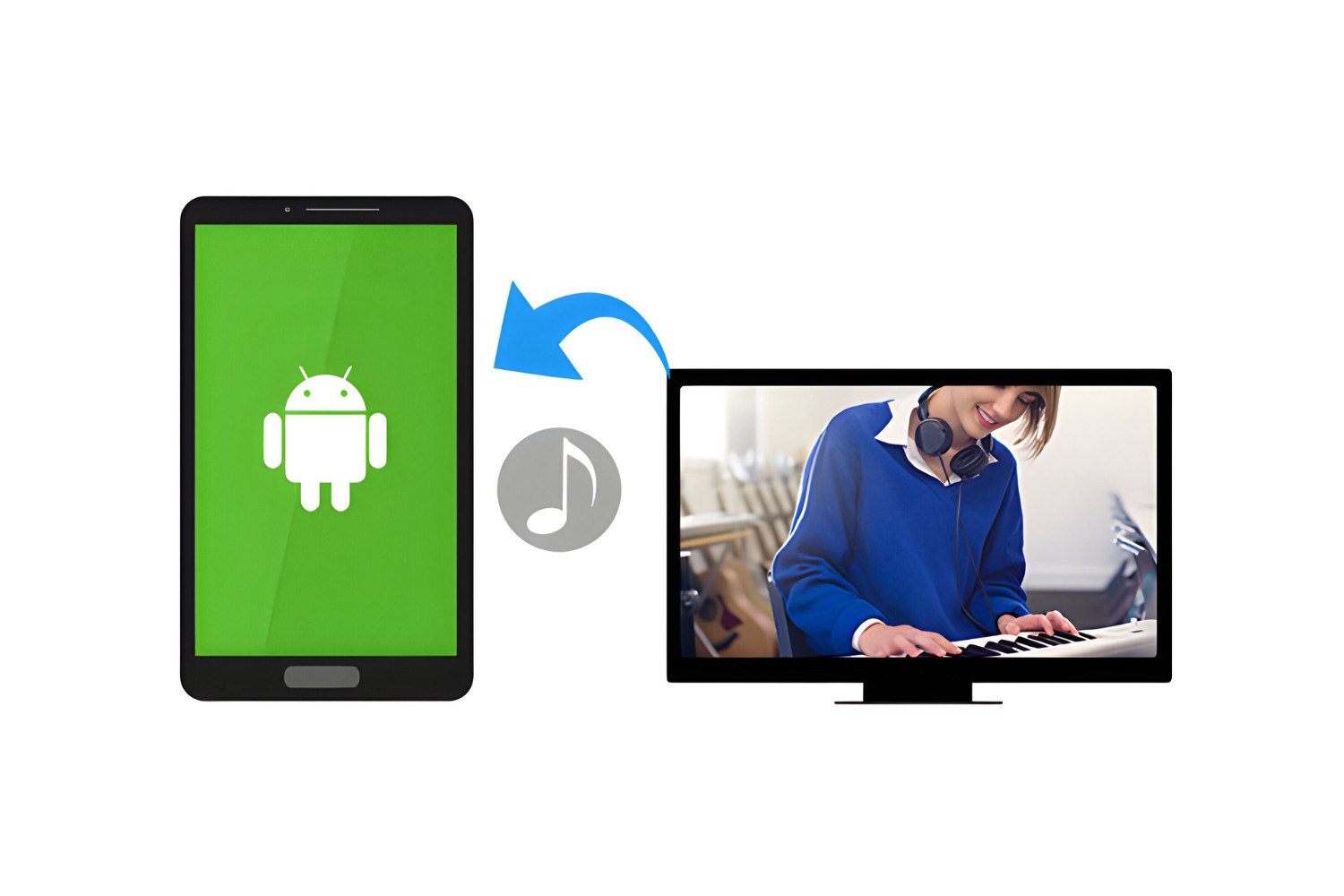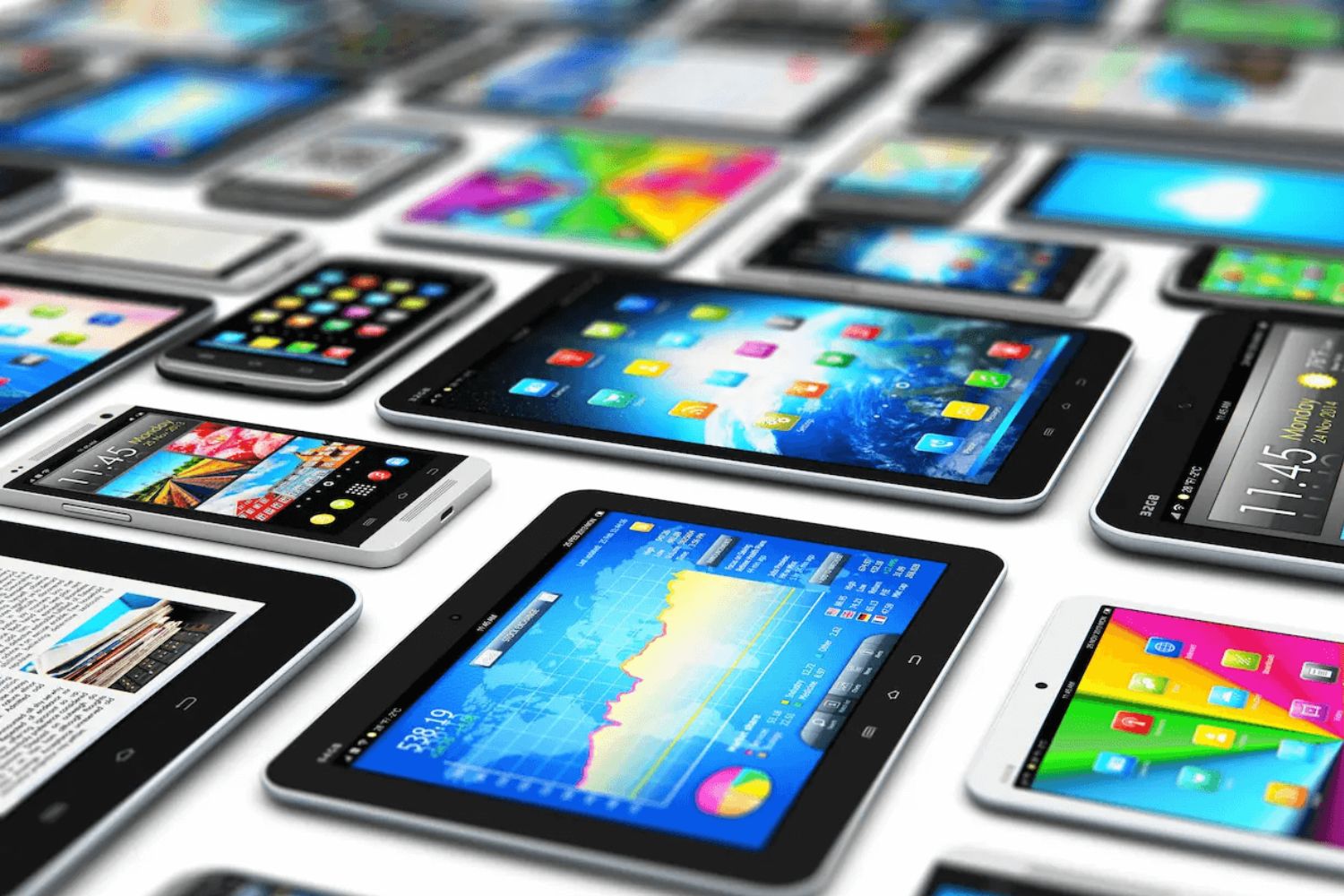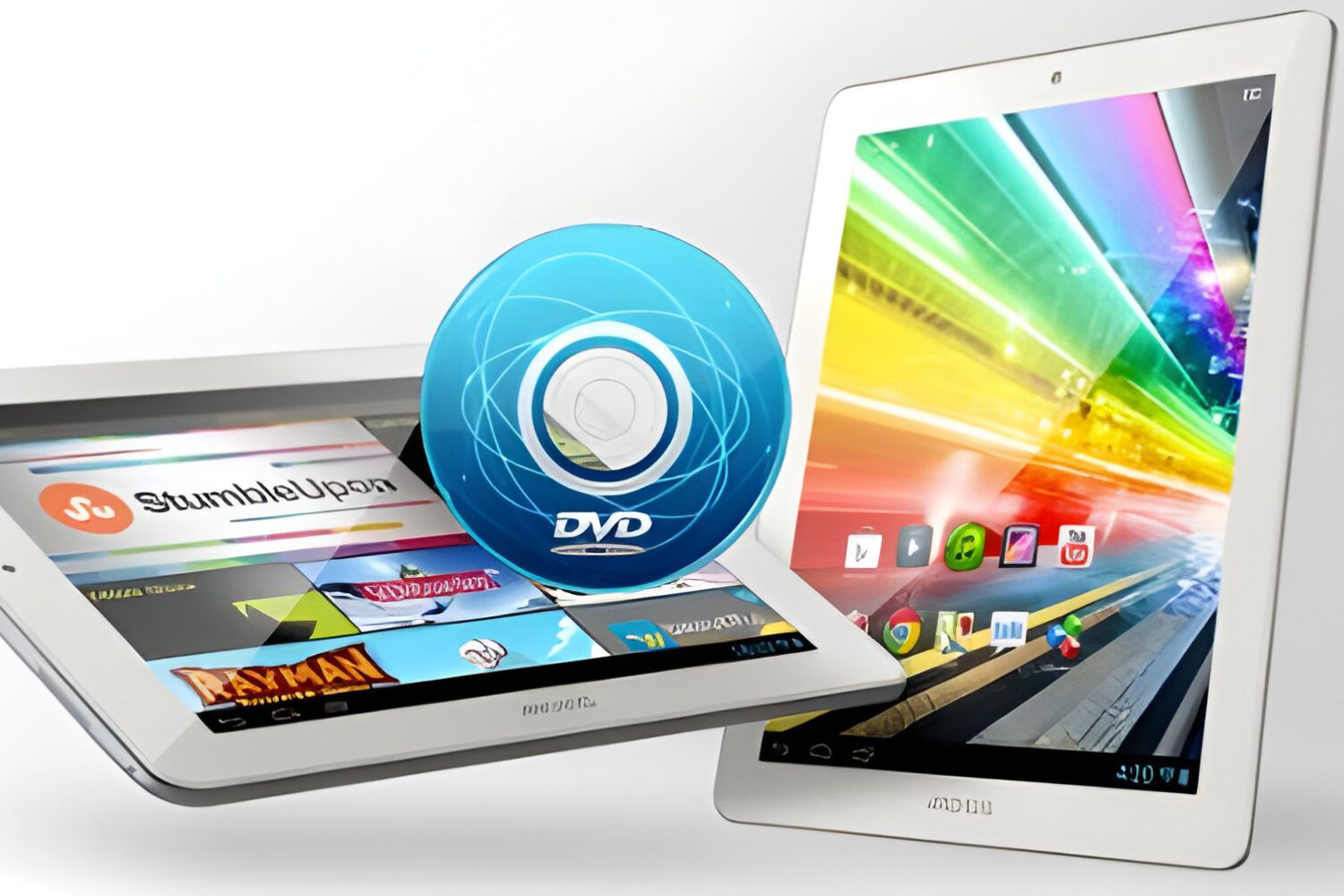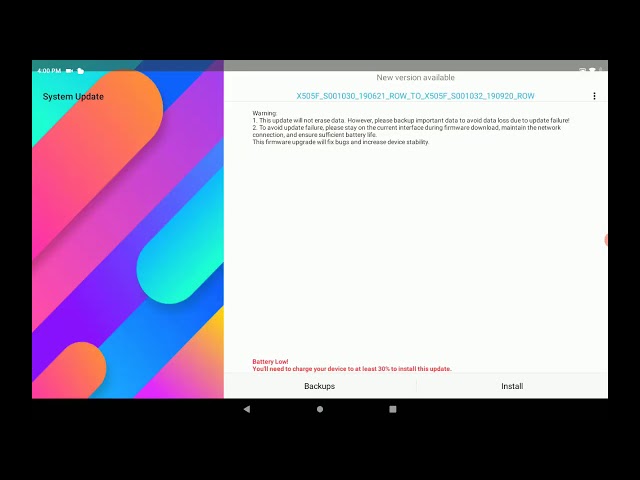What Is an Android Tablet Computer
An Android tablet computer is a portable electronic device that combines the functionality of a tablet and the power of the Android operating system. It offers a wide range of features and capabilities that make it a versatile device for various tasks and activities. Unlike traditional laptops or desktop computers, Android tablets are compact, lightweight, and easy to carry, making them ideal for on-the-go use.
At its core, an Android tablet is equipped with a touch-screen display that allows users to interact with the device using their fingers or a stylus. The operating system, Android, is developed by Google and is specifically designed for touch-screen devices, offering a user-friendly interface and seamless navigation.
Android tablet computers are known for their flexibility and customization options. Users can personalize their home screens, install a wide range of apps from the Google Play Store, and customize the device settings according to their preferences. This level of customization allows users to tailor their Android tablet to suit their individual needs and preferences.
One of the standout features of Android tablet computers is their ability to run multiple apps simultaneously. This multitasking capability allows users to switch between apps effortlessly, enhancing productivity and efficiency. Additionally, Android tablets often come with expandable storage options, allowing users to store a vast amount of files, photos, and videos.
Furthermore, Android tablet computers offer seamless integration with other devices and services. Users can easily sync their tablets with their smartphones, laptops, or smart TVs to share files, access content, or control other devices. This interconnectivity enhances convenience and allows users to stay connected across their various devices.
Overall, Android tablet computers offer a wide range of features and capabilities that cater to the needs of both personal and professional users. With their portability, flexibility, and customization options, they have become an essential tool for productivity, entertainment, and staying connected on the go.
Key Features of Android Tablet Computers
Android tablet computers come with a host of features that set them apart from other portable devices. These features make them versatile tools for a wide range of tasks and activities. Let’s explore some of the key features that make Android tablets a popular choice:
- Operating System: Android tablets run on the Android operating system, which provides a user-friendly interface and a seamless user experience. Users can easily navigate through apps, customize their home screens, and access a wide range of features and services.
- Touch-screen Display: Android tablets feature touch-screen displays that allow users to interact with the device using their fingers or a stylus. This intuitive interface makes it easy to navigate, type, draw, and interact with various apps and content.
- Wide Range of Apps: Android tablets have access to the Google Play Store, offering users a vast library of apps to choose from. From productivity tools and entertainment apps to games and social media platforms, there is an extensive selection of apps available to cater to different needs and preferences.
- Multitasking Capabilities: Android tablets excel in multitasking, allowing users to switch between apps seamlessly. This feature enhances productivity, as users can effortlessly work on multiple tasks or use multiple apps simultaneously.
- Expandable Storage: Many Android tablets come with expandable storage options, such as microSD card slots, allowing users to store a large amount of files, photos, and videos. This flexibility ensures that users don’t run out of storage space and can easily expand their storage capacity when needed.
- Connectivity Options: Android tablets offer various connectivity options, including Wi-Fi, Bluetooth, and in some cases, cellular connectivity. This allows users to stay connected, browse the internet, stream content, and access online services wherever they are.
- Camera: Most Android tablets are equipped with front and rear cameras, enabling users to capture photos and videos, make video calls, and engage in online meetings or conferences.
- Battery Life: Android tablets are designed to provide long-lasting battery life, ensuring that users can use their devices throughout the day without the need for frequent recharging.
These key features make Android tablets a versatile and powerful device for various tasks, whether it’s work, entertainment, or staying connected.
Benefits of Using an Android Tablet Computer
Android tablet computers offer a range of benefits that make them a popular choice among users. Whether for work or personal use, these devices provide a multitude of advantages. Let’s explore some key benefits of using an Android tablet:
- Portability: Android tablets are lightweight and compact, making them highly portable. You can easily slip them into a bag or backpack, allowing you to stay connected and productive on the go.
- Flexible and Customizable: Android tablets offer a high level of customization, allowing users to personalize their device according to their preferences. From customizing the home screen layout to selecting widgets, themes, and wallpapers, you can make your Android tablet truly your own.
- Wide Range of Apps: Android tablets provide access to a vast library of apps through the Google Play Store. Whether you need productivity tools, educational apps, or entertainment options like streaming services and games, there is something for everyone.
- Productivity Boost: With their multitasking capabilities, Android tablets allow you to work on multiple apps simultaneously, increasing your productivity. You can easily switch between apps, view documents side by side, and stay organized with productivity apps like note-taking, task management, and cloud storage applications.
- Entertainment Hub: Android tablets offer a fantastic platform for entertainment. You can enjoy streaming movies, TV shows, and music, play games, read e-books, and browse social media with ease. The immersive touch-screen interface enhances the overall entertainment experience.
- Staying Connected: Android tablets keep you connected with the world. Whether it’s accessing email, video calling with friends and family, or staying updated on social media, you can easily connect with others and stay informed on the latest news and trends.
- Versatility: Android tablets are versatile devices that can adapt to various tasks and user needs. From being a digital sketchbook to a portable e-reader, a presentation tool to a media player, an Android tablet can serve multiple purposes, making it a valuable device for different situations.
- Affordability: Android tablets are available in a wide range of price points, making them an affordable option compared to other tablet devices. From budget-friendly options to high-end models, there is an Android tablet that fits your budget and requirements.
These benefits make Android tablets a compelling choice for users seeking a portable, customizable, and versatile device that enhances productivity, entertainment, and connectivity in their daily lives.
Different Types of Android Tablet Computers
Android tablets come in various forms and sizes, catering to different user preferences and needs. Here are some of the different types of Android tablet computers available:
- Standard Tablets: Standard Android tablets are the most common type available. They typically feature screen sizes ranging from 7 to 10 inches and offer a balance between portability and functionality. Standard tablets are ideal for everyday use, including web browsing, multimedia consumption, and light productivity tasks.
- Mini Tablets: Mini tablets are smaller and more compact than standard tablets, with screen sizes ranging from 7 to 8 inches. They are lightweight and easily portable, making them suitable for users who prioritize mobility. Despite their smaller size, mini tablets still offer a good balance of features and performance.
- Convertible Tablets: Convertible tablets, also known as 2-in-1 or hybrid tablets, combine the functionality of a tablet and a laptop. They feature detachable keyboards or 360-degree hinges that allow them to be used as both a tablet and a laptop. Convertible tablets offer the convenience of a touch-screen tablet for casual use and the productivity of a laptop for more intensive tasks.
- Gaming Tablets: Gaming tablets are specifically designed for gaming enthusiasts. They often have larger screens, powerful processors, and dedicated graphics capabilities to deliver a high-quality gaming experience. These tablets may also come with additional features like gaming-specific controls and enhanced audio capabilities.
- Kids Tablets: Kids tablets are designed with young users in mind. They come with built-in parental controls, kid-friendly interfaces, and pre-installed educational apps and games. These tablets also offer durability features to withstand rough handling and accidental drops.
- Enterprise Tablets: Enterprise tablets are designed for business and professional use. They often come with additional security features, such as fingerprint scanners or facial recognition, to protect sensitive data. These tablets may also offer compatibility with business applications, support for productivity tools, and extended battery life for on-the-go work.
These are just a few examples of the different types of Android tablet computers available in the market. Whether you prioritize portability, gaming, productivity, or specific features, there is an Android tablet to suit your needs and preferences.
Popular Android Operating Systems for Tablets
Android tablets run on different versions of the Android operating system, each offering its own set of features and improvements. Here are some of the popular Android operating systems for tablets:
- Android 12: The latest version of Android, Android 12, offers a redesigned user interface with a focus on personalization and privacy. It introduces features like Material You, which allows users to customize their device’s appearance, and enhanced privacy controls for better data protection.
- Android 11: Android 11 introduced improved media controls, chat bubbles for messaging apps, and enhanced privacy settings. It also brought features like device controls, which allow users to access and control smart home devices directly from the notification shade.
- Android 10: Android 10 introduced a system-wide dark mode, improved gesture navigation, and enhanced privacy settings. It also focused on improving app permissions and introduced a dedicated privacy dashboard for better control over sensitive data.
- Android 9 (Pie): Android 9 brought several user interface enhancements, including adaptive battery optimization and adaptive brightness. It also introduced gesture navigation, allowing users to navigate their devices using intuitive gestures instead of traditional buttons.
- Android 8 (Oreo): Android 8 introduced picture-in-picture mode, which allows users to watch videos or use video chat apps while simultaneously using other applications. It also included improved notification management and enhanced battery life optimization.
- Android 7 (Nougat): Android 7 introduced split-screen multitasking, allowing users to run two apps side by side. It also brought improvements to notifications, including bundled notifications and direct reply functionality.
These are just a few examples of the popular Android operating systems for tablets. It’s important to note that the availability of these operating systems may vary depending on the manufacturer and the specific tablet model. It’s recommended to check the manufacturer’s website or product specifications to determine the operating system version on a particular Android tablet.
How to Choose the Right Android Tablet Computer
Choosing the right Android tablet computer can be a daunting task with so many options available in the market. To make the selection process easier, consider the following factors:
- Screen Size and Display: Determine the screen size that suits your needs, whether it’s a compact 7-inch tablet or a larger 10-inch tablet. Consider the display quality, resolution, and whether you prefer an LCD or AMOLED screen.
- Performance: Look for a tablet with a powerful processor and sufficient RAM. This ensures smooth performance, especially while multitasking or running resource-intensive apps and games.
- Battery Life: Consider the battery life of the tablet. Look for a device with long-lasting battery performance that can keep up with your usage throughout the day.
- Storage: Decide on the amount of storage you need. Consider whether the tablet offers expandable storage options like a microSD card slot, especially if you require a significant amount of space for media files, apps, and documents.
- Connectivity Options: Determine the connectivity options you require, such as Wi-Fi, Bluetooth, and GPS. If you need constant internet access on the go, consider a tablet with cellular connectivity (3G/4G/LTE).
- Camera Quality: If you plan to use your tablet for photography or video calls, consider the camera quality. Look for a tablet with a higher megapixel sensor and additional features like autofocus and image stabilization.
- Operating System Version: Check the Android operating system version installed on the tablet. Opt for the latest available version to enjoy the latest features, improvements, and security updates.
- Budget: Set a budget for your tablet purchase. Determine the features and specifications you can compromise on while staying within your budget range.
- Reviews and User Feedback: Read online reviews and user feedback to get an idea of the tablet’s performance, reliability, and user experience. This can provide valuable insights into the pros and cons of specific models.
- Brand and Support: Consider reputable brands with a history of providing quality products and reliable customer support. This ensures that you can get assistance in case of any issues with your tablet.
By considering these factors, you can narrow down your options and select the Android tablet computer that best meets your requirements, ensuring an enjoyable and satisfying user experience.
Essential Apps and Accessories for Android Tablet Computers
To enhance the functionality and utility of your Android tablet computer, there are several essential apps and accessories worth considering:
Essential Apps:
- Productivity Apps: Install productivity apps like Microsoft Office Suite, Google Drive, or Evernote for creating and editing documents, presentations, and spreadsheets on your tablet.
- Web Browsers: Download a reliable web browser like Google Chrome, Mozilla Firefox, or Microsoft Edge to browse the internet smoothly on your tablet.
- Communication Apps: Install communication apps like WhatsApp, Skype, or Zoom for staying connected with friends, family, and colleagues through messaging, voice calls, and video conferences.
- Entertainment Apps: Enhance your entertainment experience by downloading popular streaming apps like Netflix, Amazon Prime Video, or Spotify for enjoying movies, TV shows, music, and podcasts.
- Reading Apps: Install e-book reading apps like Amazon Kindle or Google Play Books for accessing a vast library of digital books and magazines on your tablet.
- Note-Taking Apps: Consider installing note-taking apps like Evernote, OneNote, or Google Keep for quickly jotting down ideas, making to-do lists, and organizing your thoughts.
- File Management Apps: Install file management apps like ES File Explorer or Solid Explorer to easily browse, manage, and organize files and folders on your tablet.
Useful Accessories:
- Protective Case or Cover: Invest in a quality protective case or cover to safeguard your tablet from scratches, dust, and accidental drops.
- External Keyboard: Consider purchasing an external keyboard or a keyboard case to enhance your typing experience, especially if you use your tablet for extensive typing tasks.
- Stylus Pen: A stylus pen can greatly improve the precision and ease of use, especially for activities like note-taking, drawing, or digital artwork.
- Screen Protector: Apply a screen protector to prevent scratches and smudges on your tablet screen, keeping it looking clean and clear.
- Stand or Dock: A stand or dock can help you prop up your tablet at a comfortable viewing angle, making it easier to watch videos, video chat, or use your tablet hands-free.
- Portable Power Bank: Invest in a portable power bank to keep your tablet charged on the go, ensuring you never run out of battery during important tasks or travels.
- Bluetooth Headphones or Speakers: Enhance your audio experience by pairing your tablet with Bluetooth headphones or speakers for watching movies, listening to music, or making video calls.
By installing these essential apps and utilizing useful accessories, you can maximize the usability and enjoyment of your Android tablet computer, transforming it into a versatile and powerful tool for various tasks and activities.
Tips for Getting the Most Out of Your Android Tablet Computer
To make the most out of your Android tablet computer and enhance your user experience, consider the following tips:
- Customize Your Home Screen: Take advantage of the customization options available on your tablet. Personalize your home screen by adding widgets, rearranging app icons, and choosing a wallpaper that reflects your style.
- Organize Your Apps: Keep your apps organized in folders or categories. This makes it easier to find and access the apps you frequently use, saving you time and effort.
- Use Multi-Window Support: If your tablet supports multi-window mode, take advantage of it. This feature allows you to open and use multiple apps simultaneously, improving multitasking and productivity.
- Explore Gestures and Shortcuts: Familiarize yourself with the gestures and shortcuts available on your Android tablet. For example, you can swipe down from the top of the screen to access the notification panel or use a three-finger swipe to capture screenshots.
- Optimize Battery Life: To extend your tablet’s battery life, reduce screen brightness, turn off Wi-Fi or Bluetooth when not in use, and close unnecessary background apps.
- Enable Data Saving: If you have limited data or want to reduce internet usage, enable the data-saving option in settings or use a browser with built-in data-saving features.
- Secure Your Device: Protect your tablet and personal data by setting up a secure screen lock, enabling device encryption, and installing a reputable security app to scan for malware.
- Backup Your Data: Regularly backup your important files and data to a cloud storage service or an external device. This ensures that your data is safe in case of any device issues or data loss.
- Keep Your Apps Updated: Update your apps regularly to ensure you have the latest features, bug fixes, and security patches. Enable automatic app updates in Google Play Store for convenience.
- Explore Additional Features: Take the time to explore the various features and settings available on your tablet. This can include split-screen mode, gaming modes, one-handed mode, or even using your tablet as a remote control for smart devices.
- Discover New Apps and Widgets: Explore the Google Play Store for new apps, games, and widgets that can expand the functionality of your tablet and cater to your specific interests and needs.
By implementing these tips, you can optimize your Android tablet experience, making it more personalized, efficient, and enjoyable for daily use.
Frequently Asked Questions about Android Tablet Computers
Here are answers to some common questions regarding Android tablet computers:
- What is the difference between an Android tablet and an iPad?
Android tablets run on the Android operating system developed by Google, while iPads run on Apple’s iOS. While both offer similar features, Android tablets allow for more customization and come in a wider range of options from different manufacturers, while iPads provide a more streamlined and cohesive ecosystem. - Can I make phone calls on an Android tablet?
Some Android tablets offer cellular connectivity, allowing you to make phone calls using the tablet. However, most Android tablets support internet-based voice and video calling apps like WhatsApp, Skype, or Google Duo for making calls over Wi-Fi or cellular data. - Can I install apps that are not available on the Google Play Store?
Yes, you can install apps from third-party sources by enabling the “Unknown Sources” option in the settings. However, caution must be exercised when downloading apps from unknown sources to ensure they are safe and free from malware. - How do I transfer files between my Android tablet and my computer?
You can transfer files between your Android tablet and computer using various methods. The most common method is via a USB cable by connecting your tablet to the computer and transferring files through file explorer. Alternatively, you can use cloud storage services or Bluetooth to transfer files wirelessly. - Can I print documents from my Android tablet?
Yes, you can print documents from your Android tablet. Ensure that your tablet and printer are connected to the same Wi-Fi network. Install a compatible printer app or use the built-in print function in apps that support it to connect and print directly from your tablet. - How can I improve the performance of my Android tablet?
To improve the performance of your tablet, you can try the following steps: close unused apps running in the background, clear cache and unnecessary files, uninstall unnecessary apps, keep the operating system and apps updated, and restart your tablet periodically. - Can I use an Android tablet for gaming?
Yes, Android tablets are capable of handling casual and even graphically intensive games. Many popular games are available in the Google Play Store, and some tablets are specifically designed for gaming with features like dedicated graphics and enhanced audio. - Are Android tablets suitable for educational purposes?
Yes, Android tablets can be a valuable tool for educational purposes. They provide access to educational apps, e-books, online courses, and other resources. Some tablets also offer features like parental controls and kid-friendly interfaces, making them suitable for young learners. - How long does the battery of an Android tablet last?
Battery life can vary depending on various factors such as usage, screen brightness, and battery capacity. On average, Android tablets can last anywhere from 6 to 12 hours on a single charge. - Can I connect a keyboard and mouse to my Android tablet?
Yes, you can connect a keyboard and mouse to your Android tablet using USB OTG (On-The-Go) adapters or through Bluetooth. This can enhance productivity and make typing and navigation easier, especially for tasks that require extensive typing.
These frequently asked questions provide insights into common concerns and queries related to Android tablet computers. If you have specific questions or concerns, it’s always recommended to refer to the manufacturer’s documentation or seek support from their customer service.
Conclusion
Android tablet computers are versatile devices that offer a wide range of features and capabilities. They provide portability, flexibility, and customization options, making them suitable for a variety of tasks and activities. From productivity and entertainment to staying connected and accessing information, Android tablets have become an essential tool in the modern era.
In this article, we explored the definition and key features of Android tablet computers. We discussed the benefits of using an Android tablet, including its portability, wide range of apps, and multitasking capabilities. We also delved into the different types of Android tablets available in the market, popular Android operating systems, and tips for choosing the right tablet and getting the most out of it.
Furthermore, we highlighted essential apps and accessories to enhance the functionality of Android tablets, as well as addressed common questions about these devices. By following these tips and utilizing the recommended apps and accessories, users can optimize their Android tablet experience and make the most out of their devices.
Whether you’re a student, professional, or casual user, Android tablets offer a convenient and powerful platform for productivity, entertainment, and staying connected. With ongoing advancements in technology and the continuous development of the Android operating system, Android tablets are poised to evolve and provide even more innovative features and capabilities in the future.







